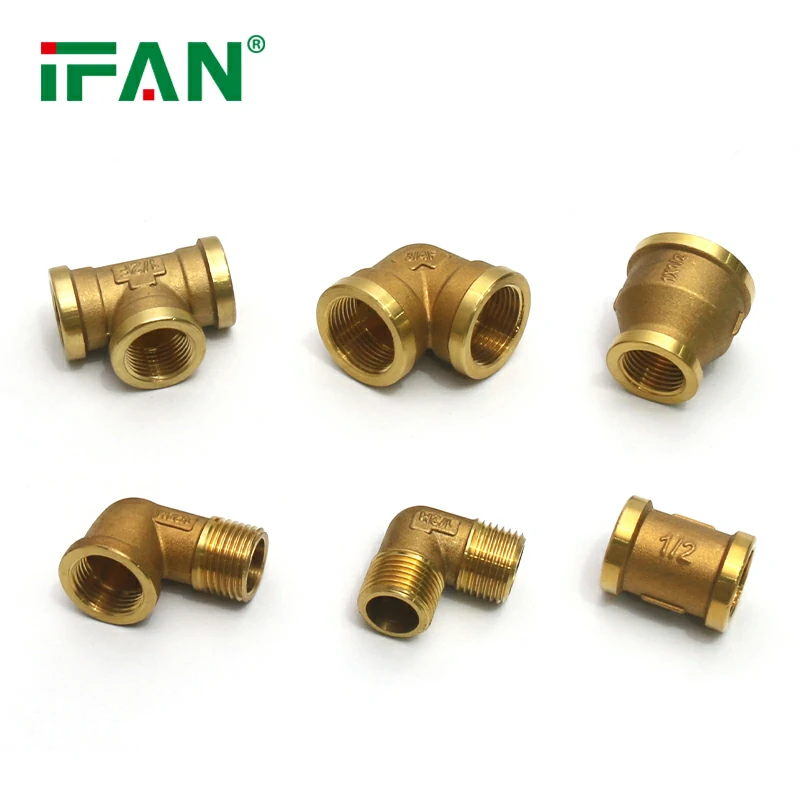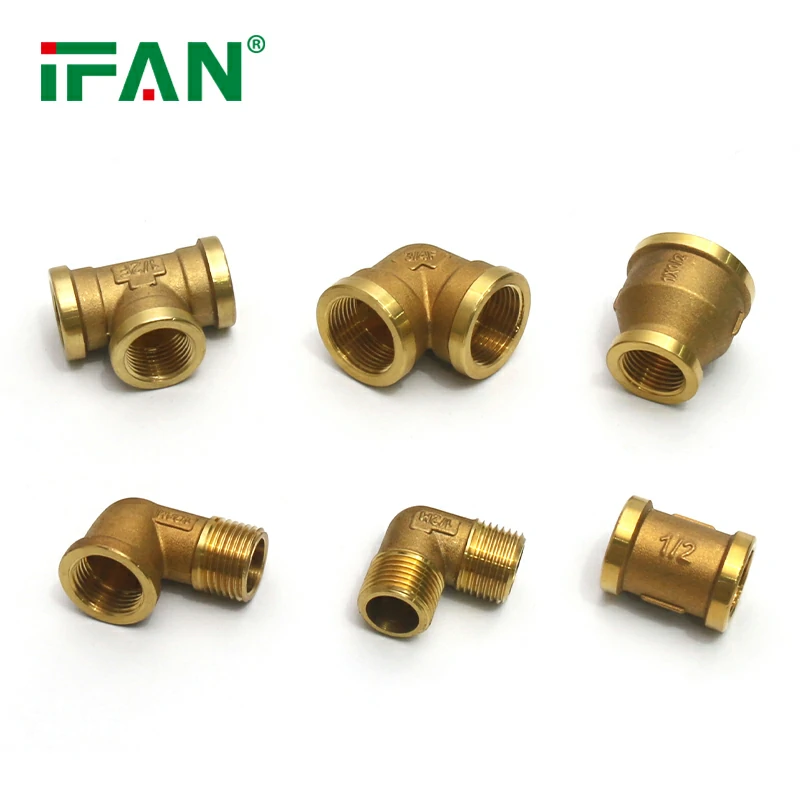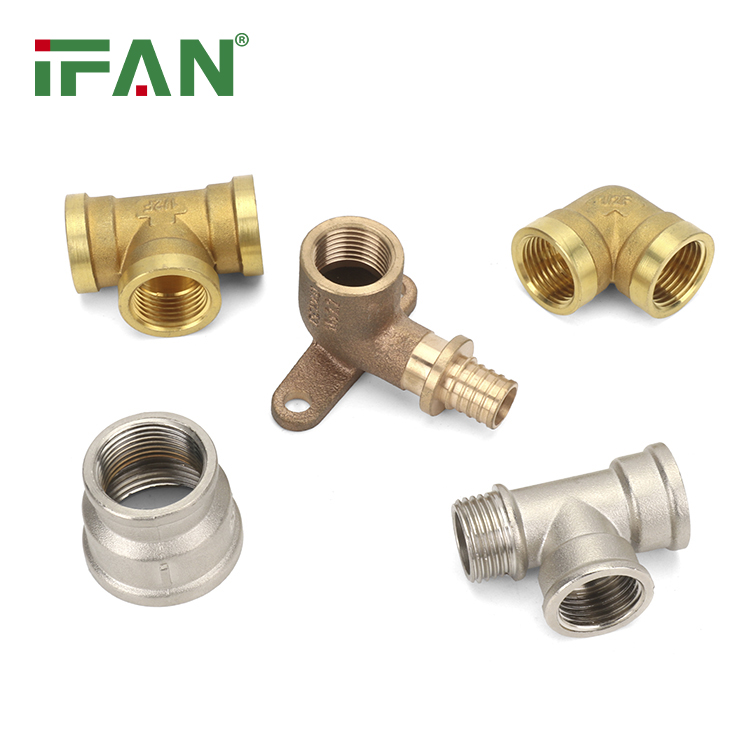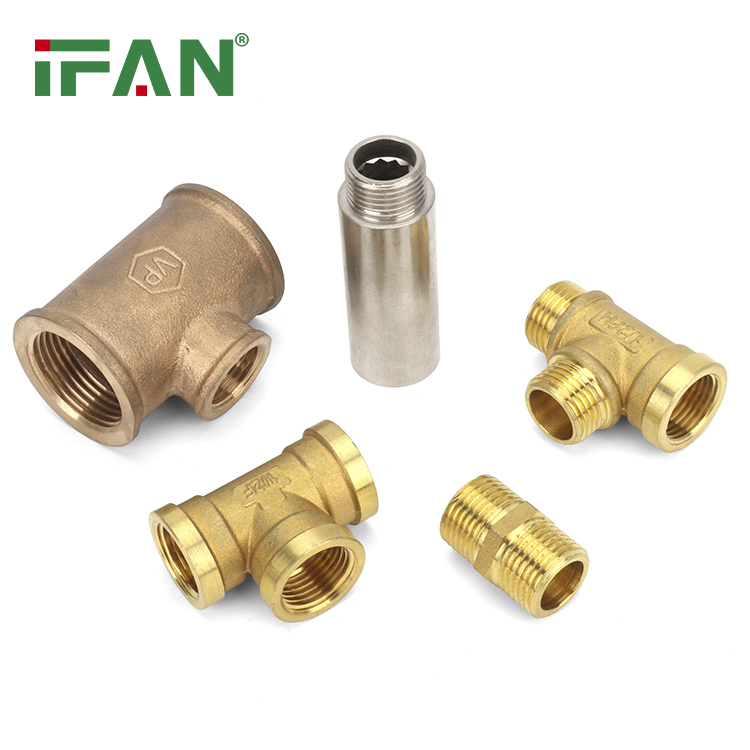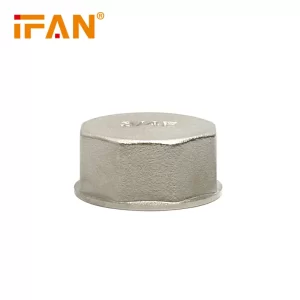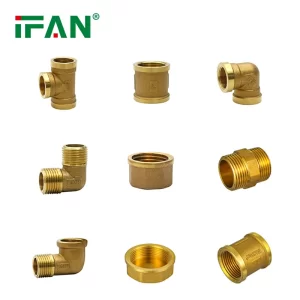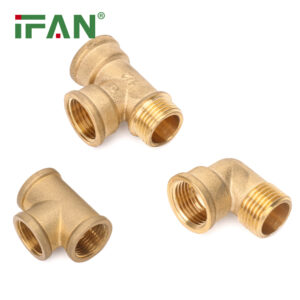Description
IFAN factory 30+ years manufacture experience support color /size customization support free sample.Welcome to consult for catalog and free samples.This is our Facebook Website:www.facebook.com,Click to watch IFAN’s product video.Compared with Tomex products, our IFAN products from quality to price are your best choice, welcome to buy!
Introduction to Brass Fittings
Brass fittings are essential components in plumbing and industrial applications, valued for their durability, corrosion resistance, and aesthetic appeal. Typically made from an alloy of copper and zinc, brass fittings are versatile and can withstand high temperatures and pressures. They find extensive use in water distribution systems, gas pipelines, HVAC systems, and more.
Types and Applications
Brass fittings come in various types to suit different needs. Common types include brass pipe fittings (like elbows, tees, and couplings), brass compression fittings, and brass flare fittings. Each type serves specific purposes: pipe fittings for joining pipes, compression fittings for connecting tubing without soldering, and flare fittings for high-pressure applications. They are widely used in residential, commercial, and industrial settings due to their reliability and ease of installation.
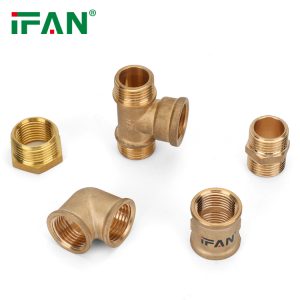
Installation Guidelines
Proper installation is crucial for ensuring the longevity and efficiency of brass fittings. Begin by preparing the pipe ends—clean and deburr them to prevent leaks. Apply an appropriate thread sealant or tape to the male threads, ensuring a tight seal without over-tightening. Use two wrenches to tighten the fittings—one to hold the fitting steady and the other to turn the pipe. Avoid excessive force, which can damage the fittings or pipes. Pressure test the system after installation to detect any leaks and make adjustments as necessary.
Maintenance Practices
Regular maintenance prolongs the lifespan of brass fittings. Inspect fittings periodically for signs of corrosion, leaks, or mineral deposits. Clean fittings with a mild detergent solution and a soft cloth to remove dirt and grime. Avoid abrasive cleaners that can scratch the surface of the brass. Lubricate threads with a small amount of plumber’s grease during reassembly to prevent galling and ensure smooth operation. Replace fittings that show signs of wear or corrosion promptly to prevent system failures.
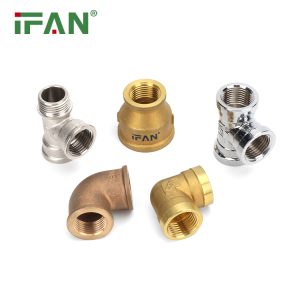
Safety Considerations and Environmental Impact
When working with brass fittings, observe safety precautions such as wearing protective eyewear and gloves to prevent injury. Dispose of old or damaged fittings responsibly to minimize environmental impact. Brass is highly recyclable, so consider recycling fittings at the end of their useful life to conserve resources and reduce waste.
Conclusion
In conclusion, brass fittings are indispensable components in plumbing and industrial systems, valued for their durability, versatility, and ease of maintenance. By understanding their types, applications, installation procedures, maintenance practices, and safety considerations, users can ensure efficient and reliable operation of their systems. Adhering to proper installation and maintenance guidelines not only enhances performance but also extends the lifespan of brass fittings, making them a preferred choice across various industries.
This guide provides a comprehensive overview of brass fittings, equipping users with the knowledge needed to effectively utilize and maintain these essential components.
Related products
-
Brass Fittings
Brass Fitting Cap: Sealing Perfection for Plumbing Security


